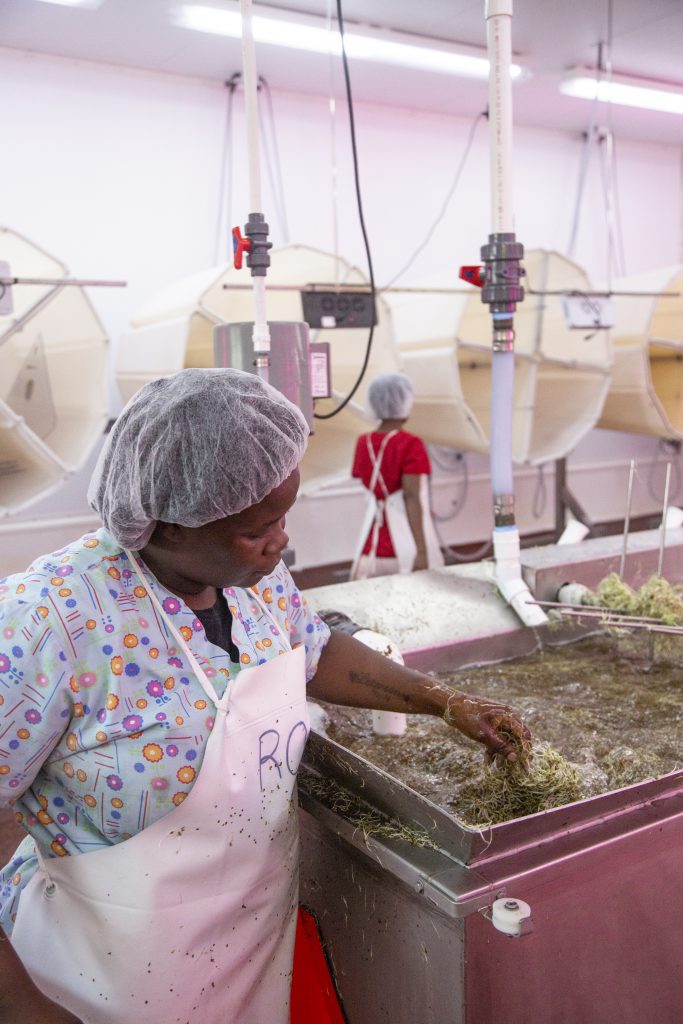Farm-to-table trend brings local flavor to restaurants
By Alexander Someillan
Christopher Columbus High School
When it comes to food, Manny Wong believes that the origin of every single bite should be transparent.
Fullei Fresh is Wong’s hydroponic farm, which grows plants using mineral nutrient solutions in a water solvent instead of soil.

The farm specializes in delivering produce directly to retailers, bypassing many steps in distribution that can be detrimental to the freshness or quality of the food. This is especially important because it retains the vitamins that determine the level of nutritional content in the food.
“We have a full traceability program so if you look at our products, you’ll be able to trace it all the way back to who grew the product, the date of when it was harvested and more,” Wong said.
Farm-to-table is generally defined as a social movement that advocates for serving local food at restaurants. Not only must the food be local, but also directly acquired from the producer. The movement has gained traction because of its major health benefits.
This lifestyle is healthier for the human body and the environment. According to the Automotive Training Center, the average 18-wheel semi-truck travels about 5.6 miles per gallon of diesel fuel. That means about 286 gallons of diesel fuel are needed to transport food for 1,500 miles.
Americans who get their food from factory farms are seeing drastic health problems. Some of the biggest concerns include genetically modified organisms, the decreasing nutritional value of food and outbreaks of E.coli and other dangerous bacteria.
“I believe freshness in the food industry is key,” said Eileen Andrade, owner of Finka & Amelia’s 1931.

“We see a lot of crazy things in the industry right now where everyone is injecting hormones and other dangerous things into the food that their customers end up consuming,” Andrade said.
By discarding heavily processed foods, Americans avoid the high calorie intake and switch to all-natural foods. Also, produce that has to make an expedition to the grocers is often picked before it is completely ripe, which, lessens its nutritional content.
According to the Center for Food Safety, a non-profit public interest and environmental advocacy organization, “The genetic engineering of plants and animals is looming as one of the greatest and most intractable environmental challenges of the 21st Century.”
The center has estimated that upwards of 75% of all processed products on the shelves of supermarkets have some sort of genetically engineered ingredients.
“We actually like to go out and meet the people who are raising our meat so that we know what we are giving in our restaurant is a good product,” Andrade said. In doing so, she ensures that all food products remain clean and free of genetically engineered ingredients.
Consuming locally-sourced food is not a new trend. Prior to the mid-1900s, locally sourced food was mainstream as there was no other option due to limitations in transportation. However, the enactment of the Federal-Aid Highway Act of 1956 created opportunities for the widespread transportation of produce.
The passage of this act led to the demise of family farms and the rapid rise of large-scale machine-driven farms. Despite the huge growth in population over the last century, Americans have seen the number of farms in the country drop and the size of surviving farms increase.
According to the United States Department of Agriculture, the number of farms in the United States since the year 1900 has dropped 63%, while the average farm size has risen by 67%.
So what’s next?
“I think people nowadays need to do more homework on where their food items are coming from,” Wong said. “Not every grocer is the same. Do your homework.”